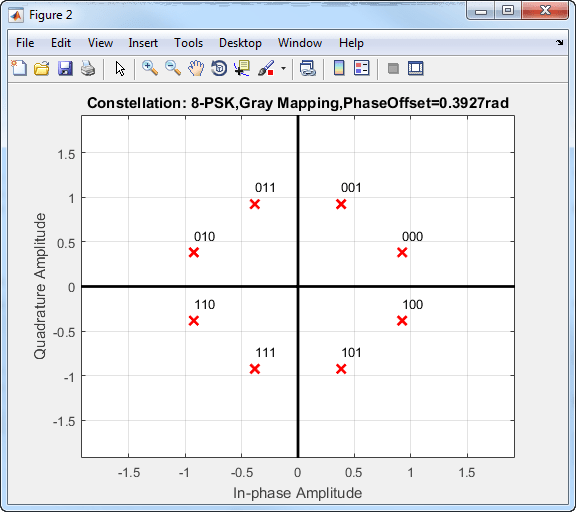pskmod
Modulate signal using M-PSK method
Syntax
Description
Y = pskmod(X,M,phaseoffset)
Y = pskmod(X,M,phaseoffset,symorder)
Y = pskmod(X,M,Name=Value)pskmod(Y,M,PlotConstellation=true) modulates using
modulation order M and plots the constellation. Specify
name-value arguments after all other input arguments.
Examples
Input Arguments
Name-Value Arguments
Output Arguments
Algorithms
For higher-order PSK constellations, the complex baseband form for an M-ary PSK signal using binary-ordered symbol mapping is
When the input is configured for bits, groups of log2(M) bits represent the complex symbols for the configured symbol mapping. The mapping can be binary encoded, Gray encoded, or custom encoded.
Gray coding has the advantage that only one bit changes between adjacent constellation points, which results in better bit error rate performance.
This 8-PSK constellation uses Gray-coded symbol mapping.

For modulation orders beyond 4, the bit error rate performance of PSK in AWGN worsens. In this bit error rate plot for Gray-coded mapping, the QPSK and BPSK curves overlap one another.

References
[1] Proakis, John G. Digital Communications. 4th ed. New York: McGraw Hill, 2001.



